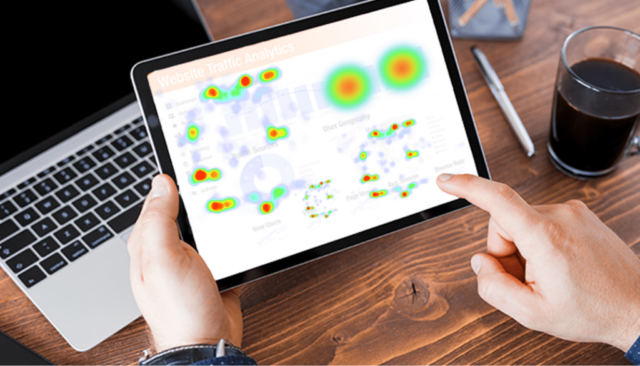In the digital landscape, user experience (UX) plays a pivotal role in determining the success of a website. Understanding how users interact with your site is crucial for optimizing design, enhancing engagement, and ultimately increasing conversions. One of the most effective tools for gaining insights into user behavior is heatmaps. In this blog, we’ll explore what heatmaps are, how to use them, and how they can help improve your website design.

Table of Contents
ToggleWhat Are Heatmaps?
Heatmaps are visual representations of data that illustrate where users click, scroll, and move their mouse on a webpage. They use color gradients to show areas of high activity (often in warm colors like red and orange) and low activity (in cool colors like blue and green). By analyzing these patterns, website owners can gain valuable insights into user behavior and preferences.
Types of Heatmaps
- Click Heatmaps: These show where users click on a webpage. They help identify which elements are getting the most interaction and which are being ignored.
- Scroll Heatmaps: These visualize how far down a page users scroll, indicating whether users are reaching important content or calls to action.
- Movement Heatmaps: These track mouse movements and can indicate areas of interest, even if users don’t click.
How Heatmaps Work
Heatmaps work by tracking user interactions on your website. When a user visits your site, heatmap tools record their actions and aggregate the data to create visual representations of user behavior. This information can then be used to identify patterns and trends in user interactions.
Setting Up Heatmaps
- Choose a Heatmap Tool: There are several heatmap tools available, such as Hotjar, Crazy Egg, and Mouseflow. Choose one that fits your needs and budget.
- Install the Tracking Code: After selecting a tool, you’ll need to install the tracking code on your website. This code will collect data on user interactions.
- Define Your Goals: Before starting your analysis, define what you want to achieve. Are you looking to improve a specific landing page, increase conversions, or enhance user engagement?
- Collect Data: Allow the heatmap tool to gather data over a specified period. The duration will depend on your website traffic; more data is generally better for accurate insights.
Using Heatmaps to Improve Website Design
1. Analyze Click Patterns
By examining click heatmaps, you can identify which elements are attracting attention and which are being ignored. If important buttons or links aren’t getting clicks, consider redesigning their placement or appearance. For instance, if a CTA button is often overlooked, moving it to a more prominent position or changing its color could lead to increased engagement.
2. Assess Scroll Depth
Scroll heatmaps reveal how far users scroll down a page. If users drop off before reaching key content, it may indicate that the design is too cluttered, or the content isn’t engaging enough. Consider shortening the content above the fold or adding compelling visuals to encourage users to scroll further down.
3. Optimize Content Layout
Movement heatmaps can help you understand where users are focusing their attention. If users are spending time hovering over specific areas, consider placing important content or CTAs in those locations. This insight can guide the overall layout and design of your webpage.
4. Identify Confusing Elements
Heatmaps can reveal areas of confusion or frustration. If users are clicking on elements that aren’t clickable or scrolling through irrelevant content, it’s a sign that your design needs refinement. Simplifying navigation, clarifying button functions, and removing distractions can enhance the user experience.
5. Test Different Variations
Once you’ve gathered insights from heatmaps, implement design changes and conduct A/B tests to see how these adjustments impact user behavior. Comparing heatmaps from different versions can help you determine which design resonates better with your audience.
6. Monitor Changes Over Time
After implementing design changes, continue to monitor heatmaps to evaluate how user interactions evolve. This ongoing analysis allows you to adapt your design strategy as user preferences change.
Conclusion
Heatmaps are a powerful tool for improving website design by providing insights into user behavior and preferences. By understanding how users interact with your site, you can make data-driven decisions that enhance user experience, optimize content placement, and increase conversions. Integrating heatmap analysis into your design process ensures that your website remains user-centered and effective in achieving your business goals. Start utilizing heatmaps today, and watch your website transform into a more engaging and successful platform!


No responses yet